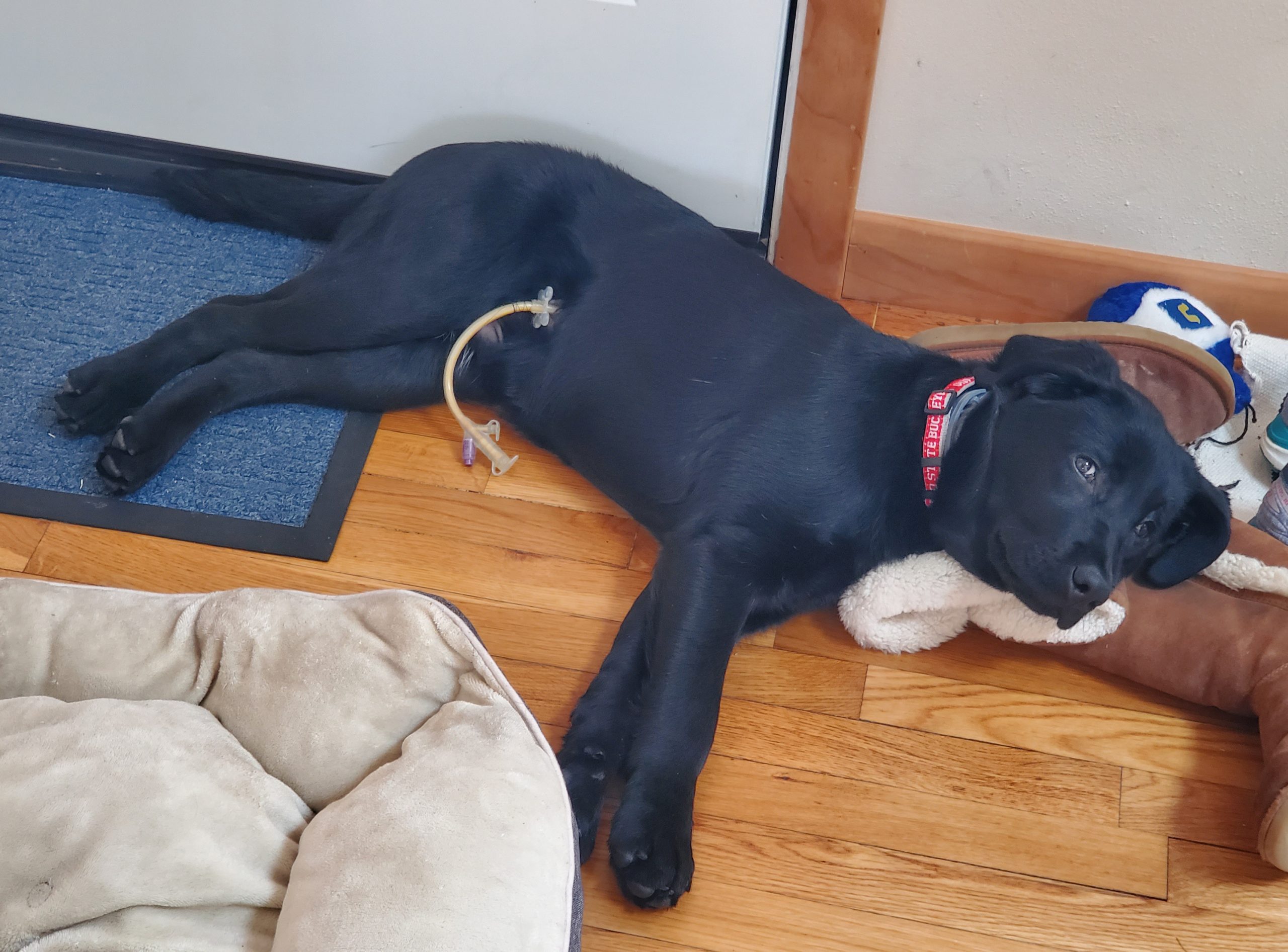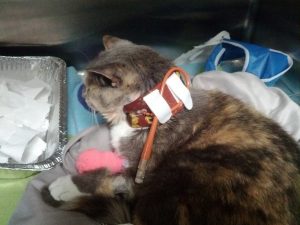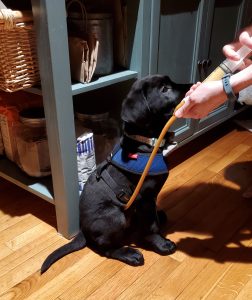
the scientific study of pet nutrition by veterinary nutrition specialists and experts.
Assisted Feeding: When to Consider a Feeding Tube

Many health conditions and diseases as well as some injuries and birth defects can lead to pets that either do not have enough of an appetite to eat adequate amounts of food to maintain weight or have problems chewing and swallowing, even with a good appetite. Unfortunately, pets that do not eat enough calories and nutrients have much worse outcomes, no matter what the disease condition. They don’t heal as quickly or as well, they may become sicker and take longer to recover, their immune systems can be weakened, and they may even not live as long!
When pets (and people) are unable or unwilling to eat enough food on their own, we can use feeding tubes to provide them with much needed calories and nutrients, for a few days or even a few years.
When to consider a feeding tube
If a pet is unwilling or unable to eat enough calories to maintain weight for 3 or more days, a feeding tube should be considered. This is especially true if the pet’s health condition is not expected to resolve quickly and drugs that are used to increase appetite have not improved intake. Feeding tubes can also be useful for pets who have an appetite, but not for the kind of food that is best for their health condition. For example, some pets with kidney disease will only eat meat even when a high meat diet is likely to worsen their kidneys, making them feel sicker and shortening their lives. A feeding tube can allow them to be fed a diet that can help maintain their kidney function and provide them with a longer, healthier life.
Feeding tubes can be used for as short a time period as 2-3 days until a pet’s appetite improves, or can be used for weeks to months or longer if a pet has a chronic illness or damage to its mouth or esophagus.
A pet’s quality of life is an important consideration for use of a feeding tube in health conditions where the pet is unlikely to be cured. Feeding tubes should only be used in pets that have a good quality of life other than the ability to eat enough of an optimal diet to maintain weight and help manage its disease. They should not be used to prolong the life of pets who have more bad days than good ones!
What kind of diseases can benefit?
Feeding tubes are commonly used for pets with injuries to the mouth or esophagus such as broken jaws, esophageal stricture (inappropriate narrowing), or megaesophagus (when the esophagus gets really distended and the pet can’t swallow food). They are also commonly used in pets with illnesses such as pancreatitis, hepatic lipidosis (fatty liver), and kidney disease. These diseases frequently result in poor appetite; however, maintaining an adequate calorie and nutrient intake can be critical to helping these pets recover in some cases, or to slow their disease progression in others.
How do feeding tubes work?
There are several types of feeding tubes that are routinely used in cats and dogs. One type (nasogastric or nasoesophageal, NE or NG) goes into the nostril and then down into the esophagus or all the way into the stomach. These tubes can be easily placed in awake or lightly sedated animals and are usually used for a few days in hospitalized pets who aren’t eating well while they recover enough to get their appetite back. Liquid diets are fed down the tube to provide all of the pet’s calories and other nutrients until they are willing to eat on their own.
For pets that may need longer nutritional support, esophageal feeding tubes (e-tubes) or gastric (stomach) tubes (g-tubes or PEG tubes) can be used. These tubes require minor surgery to place but can be left in for weeks to months or even longer.
E-tubes go into the esophagus from the side of the neck, where they are protected with a special collar or a neck wrap. These are the most commonly used tubes in cats and dogs for most conditions. G-tubes bypass the esophagus entirely and go right into the stomach, exiting the skin right behind the rib cage. They can be used in both cats and dogs. Advantages of g-tubes are that they bypass the esophagus, which can be ideal for pets that have damage or dysfunction of their esophagus.
Both e-tubes and g-tubes can be used by pet owners to feed their pets at home which can mean that they can leave the hospital sooner. Depending on the pet’s medical issues, special diets or even regular maintenance foods that are carefully blenderized with water are used so that they can be fed through the tube with a syringe. Most pets tolerate these kind of feeding tubes very well and most owners can easily learn how to feed their pets using the tube. Sometimes medications and fluids can also be given via the tube, reducing the stress of both pet owner and pet.
Talk to your veterinarian
If your pet is sick or injured and isn’t eating enough calories to maintain their weight and optimize their health (or if they won’t eat the optimal diet for their underlying medical issues), we recommend having a discussion with your pet’s veterinarian to see if a feeding tube might be a good option for your pet and your family. While they can’t help all health conditions, they can make a huge difference for some pets! You can also check out our FAQ on feeding tubes for more info
Want to read more information on feeding your pet?
Subscribe to always know when we add new material!
Recommended Posts

Can Diet Help With My Dog’s Seizures?
January 18, 2024

The Most Popular Holiday Foods…That Your Pet Should Avoid!
December 08, 2023

Veterinarian Recommended Pet Foods: What You Need to Know
November 05, 2023



